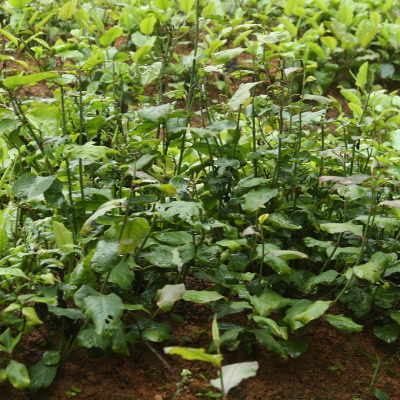Plumbago indica Linn.
Synonyms : Plumbago rosea Linn.
Family : Plumbaginaceae
Group : Anti-arthritic/anti-rheumatic/anti-inflammatory
Parts Used : Root
Vernacular Names :-
| English | : | Red flowered leadwort |
| Malayalam | : | Chettikoduveli |
| Hindi | : | Lalcitra, Raktacitra |
| Kannada | : | Kempucitramala |
| Tamil | : | Cittramulam |
| Telungu | : | Yerracitramulam. |
Distribution and Habitat: Native of Coromandel Coast. Found throughout India, in moist situations as well as cultivated.
Botany: A pretty subscandent perennial shrub with semi-woody striate stems and flexible branches.
- Leaves: Simple, alternate oblong, short cuneate at the base passing into a very short amplexicaul, exauriculate and reddish petiole.
- Flowers : Bright red, arranged in long terminal spikes. The calyx ribs are covered with stipitate, bifarious and subsessile gland. Corolla tube is slender and four times as long as the calyx.
- Roots : The stout roots are cylindrical, irregularly bent, light yellowish brown with smooth surface having short transverse shallow fissures at the regions of the bents. A light yellowish juice exudes from the cut surface. A healthy plant may produce 18-20 stout roots.
Chemical constituents: The chemical constituents include plumbagin and sitosterol glucoside. Clinical trials have demonstrated that plumbagin oil from P. indica is useful in common wart.
Properties & Uses:
- The roots are acrid, astringent, thermogenic, anthelmintic, constipating, expectorant, anti-inflammatory, abortifacient, alterant, anti-periodic, carminative, digestive, sudorific, narcotic, gastric, nervous stimulant and rejuvenating.
- Root is a powerful sialogogue and vesicant.
- Esteemed remedy for leucoderma and other skin diseases.
- Burning action of the root cause blisters on the skin .
- The roots are useful in dyspepsia, colic, inflammations, cough, bronchitis, helmenthiasis, haemorrhoids, elephantiasis, chronic and intermittent fever, leprosy, leucoderma, ringworm, scabies, hepatosplenomegaly, amenorrhoea, odontalgia, vitiated conditions of vata, kapha and anaemia.
Formulations: Citrakasavam, Thaleesapathradi churnam, Dasamularista, Gulgulutiktaka kasaya, Yogarajachurna, etc.
Agrotechnology
Propagation: By single, double or three noded semi hardwood stem cuttings. Cuttings are planted in nursery beds for rooting.
Planting: Plough two or three times the land and make ridges of 30cm height and 50 cm apart. 2-3 month old rooted cuttings are planted on teh ridges at 15 cm apart in June- July.
Varieties: Mridula(low plumbagin content), Agni (high plumbagin content)and KAU Swathi(moderate plumbagin content)
Manuring: Cattle manure/compost @ 10t/ha as basal dose. Fertilizer recommendation is 50:50:50 kg/ha N: P:K. N and K are applied as two splits at 2 and 4 months after planting.
Harvesting: At the end of 18 months, tubers are harvested when it contains maximum content of plumbagin. Care should be taken to wear gloves; else the phenols present in the roots will cause burning sensation. The collected tubers are washed, tied into bundles and marketed. Plumbago yields about 7-10 tons tubers/ha with good management.

